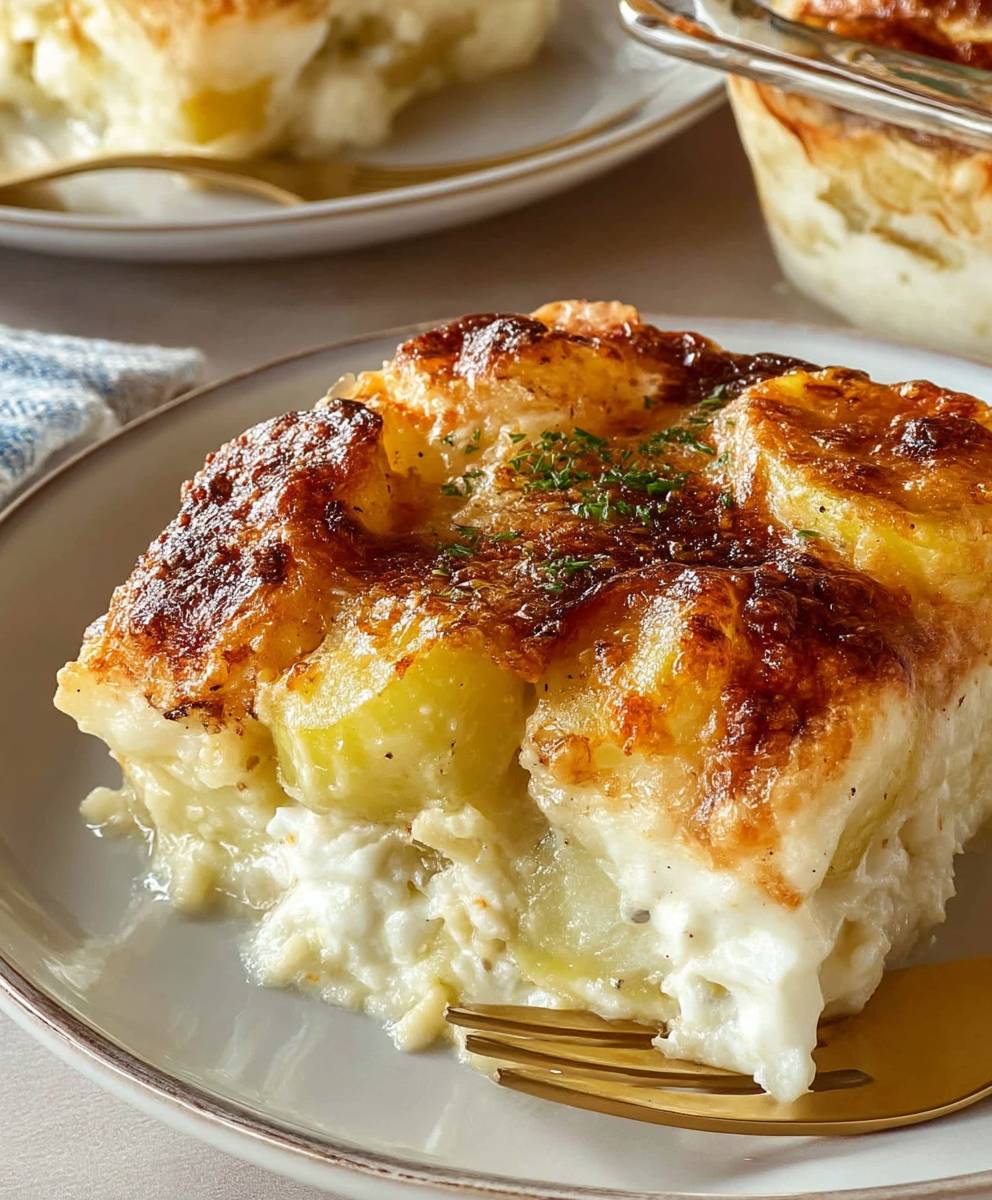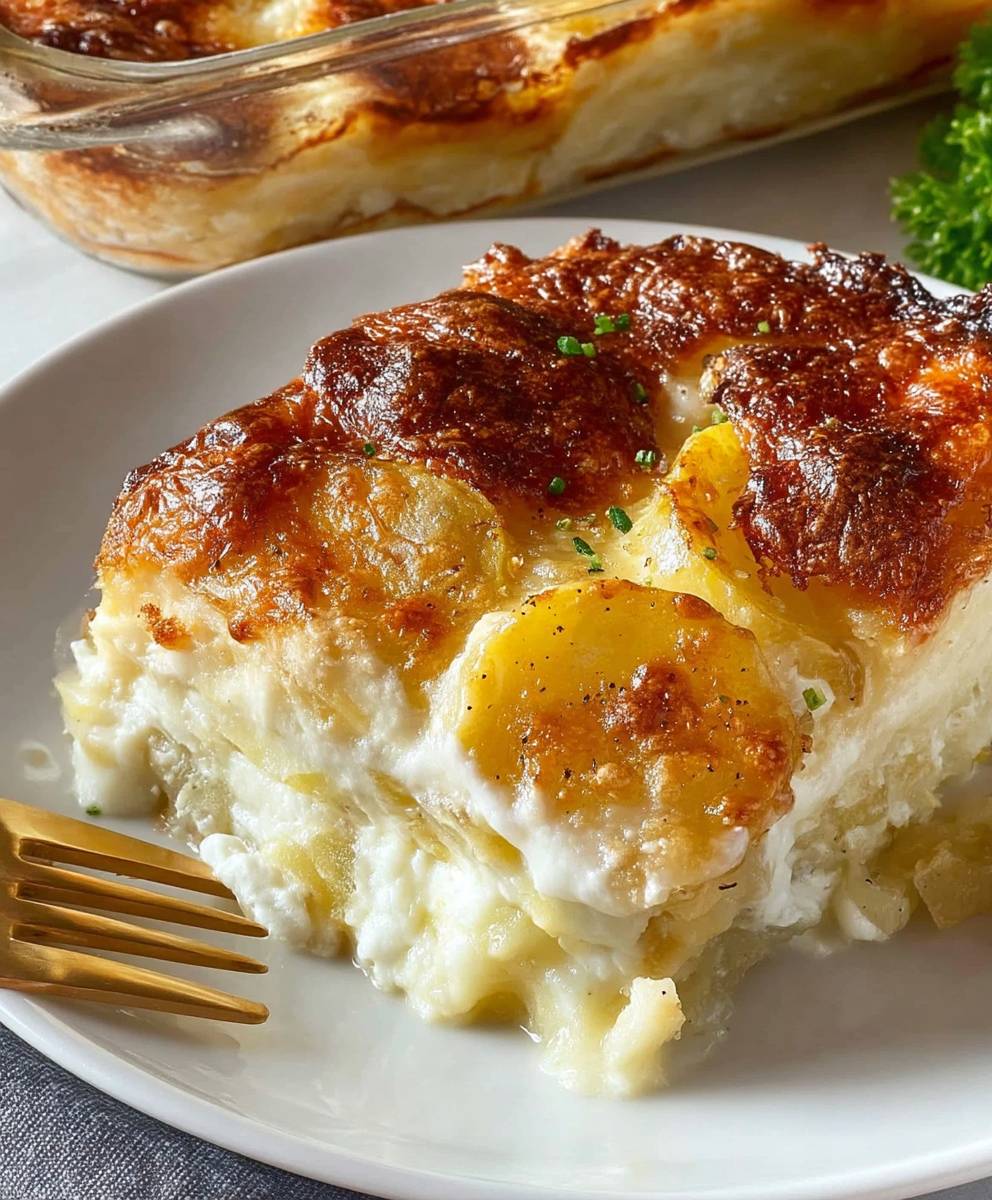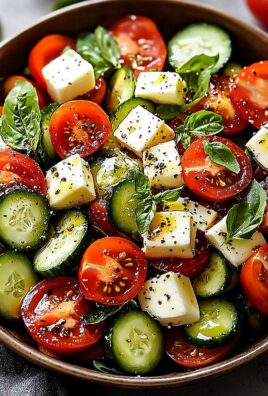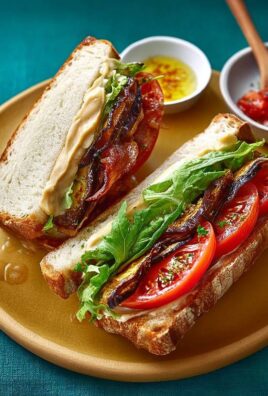Potato Knish Casserole: Prepare to be amazed! Imagine the comforting, savory goodness of a classic potato knish, but amplified and transformed into an easy-to-make, crowd-pleasing casserole. This isn’t just dinner; it’s a warm hug on a plate, perfect for busy weeknights or potlucks with friends and family.
The knish itself boasts a rich history, originating in Eastern European Jewish communities. These humble, filled pastries were a staple, offering sustenance and flavor in equal measure. While traditionally enjoyed as individual pockets of deliciousness, our Potato Knish Casserole reimagines this beloved dish for the modern cook.
Why do people adore knishes? It’s the perfect combination of a flaky, often buttery crust and a creamy, flavorful filling. In this casserole version, we capture all of that magic, but with significantly less effort. Think tender potatoes, savory onions, and a hint of garlic, all nestled beneath a golden-brown, crispy topping. It’s the ultimate comfort food satisfying, delicious, and surprisingly simple to prepare. The best part? This casserole is easily customizable to your liking. Add some cheese, different spices, or even some cooked meat for a heartier meal. Get ready to experience the joy of a knish in a whole new way!
Ingredients:
- For the Potato Filling:
- 5 lbs Russet potatoes, peeled and quartered
- 1 large onion, finely chopped
- 4 cloves garlic, minced
- 1/4 cup vegetable oil, plus more for drizzling
- 1/2 cup chicken broth (or vegetable broth for vegetarian option)
- 1/4 cup chopped fresh parsley
- 2 tablespoons unsalted butter
- 1 teaspoon salt, or to taste
- 1/2 teaspoon black pepper, or to taste
- 1/4 teaspoon garlic powder
- 1/4 teaspoon onion powder
- For the Dough:
- 4 cups all-purpose flour, plus more for dusting
- 1 teaspoon salt
- 1 cup vegetable oil
- 1 cup warm water
- For the Onion Topping:
- 2 large onions, thinly sliced
- 2 tablespoons vegetable oil
- 1/4 teaspoon salt
- 1/4 teaspoon black pepper
- For Assembly:
- 1 egg, beaten (for egg wash)
- Everything bagel seasoning (optional)
Preparing the Potato Filling:
- Boil the Potatoes: Place the peeled and quartered potatoes in a large pot. Cover them with cold water and add a pinch of salt. Bring the water to a boil over high heat, then reduce the heat to medium and let the potatoes simmer until they are fork-tender, about 15-20 minutes. You should be able to easily pierce them with a fork.
- Sauté the Onion and Garlic: While the potatoes are boiling, heat 1/4 cup of vegetable oil in a large skillet over medium heat. Add the finely chopped onion and cook, stirring occasionally, until it is softened and translucent, about 8-10 minutes. Add the minced garlic and cook for another minute until fragrant, being careful not to burn it.
- Drain and Mash the Potatoes: Once the potatoes are tender, drain them thoroughly in a colander. Return the drained potatoes to the pot. Add the sautéed onion and garlic mixture, chicken broth (or vegetable broth), chopped parsley, butter, salt, pepper, garlic powder, and onion powder.
- Mash Until Smooth: Use a potato masher or an electric mixer to mash the potatoes until they are smooth and creamy. Taste and adjust the seasonings as needed. You might want to add a little more salt, pepper, or garlic powder to your liking. The filling should be flavorful and well-seasoned. Set the potato filling aside to cool slightly while you prepare the dough.
Making the Dough:
- Combine Dry Ingredients: In a large mixing bowl, whisk together the flour and salt. This ensures the salt is evenly distributed throughout the dough.
- Add Oil and Water: Pour the vegetable oil into the flour mixture. Using your hands or a wooden spoon, mix the oil into the flour until the mixture resembles coarse crumbs. Gradually add the warm water, mixing until a dough starts to form.
- Knead the Dough: Turn the dough out onto a lightly floured surface. Knead the dough for about 5-7 minutes, or until it is smooth and elastic. The dough should be pliable and easy to work with. If the dough is too sticky, add a little more flour, one tablespoon at a time. If the dough is too dry, add a little more water, one teaspoon at a time.
- Rest the Dough: Form the dough into a ball. Place it back in the mixing bowl, cover it with a clean kitchen towel, and let it rest for at least 30 minutes. This allows the gluten to relax, making the dough easier to roll out. You can even let it rest for an hour or two if you have the time.
Preparing the Onion Topping:
- Caramelize the Onions: Heat 2 tablespoons of vegetable oil in a large skillet over medium-low heat. Add the thinly sliced onions, salt, and pepper. Cook, stirring occasionally, until the onions are softened and caramelized, about 20-25 minutes. The onions should be a deep golden brown color and have a sweet, savory flavor. Be patient and don’t rush the process, as this is what gives the topping its delicious flavor. Stir frequently to prevent burning.
- Set Aside: Once the onions are caramelized, remove them from the heat and set them aside.
Assembling the Potato Knish Casserole:
- Preheat Oven: Preheat your oven to 375°F (190°C). Grease a 9×13 inch baking dish with vegetable oil or cooking spray.
- Divide the Dough: After the dough has rested, divide it in half. On a lightly floured surface, roll out one half of the dough into a large rectangle that is slightly larger than your baking dish.
- Transfer to Baking Dish: Carefully transfer the rolled-out dough to the prepared baking dish. Gently press the dough into the bottom and up the sides of the dish, creating a crust. Trim any excess dough that hangs over the edges.
- Add Potato Filling: Spread the cooled potato filling evenly over the dough in the baking dish. Make sure the filling is distributed evenly to ensure each bite is packed with flavor.
- Roll Out Second Dough Layer: Roll out the remaining half of the dough into another large rectangle, similar in size to the first one.
- Cover with Second Dough Layer: Carefully place the second dough rectangle over the potato filling, creating a top crust. Trim any excess dough and crimp the edges of the top and bottom crusts together to seal the casserole. You can use a fork to create a decorative pattern along the edges.
- Egg Wash and Seasoning: In a small bowl, beat the egg. Brush the top of the casserole with the beaten egg. This will give the crust a beautiful golden-brown color. Sprinkle the top with everything bagel seasoning, if desired. This adds a delicious savory flavor and a nice textural element.
- Add Onion Topping: Spread the caramelized onions evenly over the egg-washed top crust.
- Bake: Bake in the preheated oven for 45-50 minutes, or until the crust is golden brown and the filling is heated through. The casserole should be bubbling slightly around the edges.
- Rest Before Serving: Remove the casserole from the oven and let it rest for at least 10-15 minutes before cutting and serving. This allows the filling to set slightly and makes it easier to slice.
Tips for Success:
- Don’t Overwork the Dough: Overworking the dough can result in a tough crust. Knead it just until it is smooth and elastic.
- Cool the Potato Filling: Make sure the potato filling has cooled slightly before assembling the casserole. This will prevent the dough from becoming soggy.
- Adjust Seasonings to Taste: Feel free to adjust the seasonings in the potato filling and onion topping to your liking.
- Make Ahead: The potato filling and onion topping can be made ahead of time and stored in the refrigerator for up to 2 days. The dough can also be made ahead of time and stored in the refrigerator for up to 24 hours. Just bring it to room temperature before rolling it out.
- Freezing Instructions: The assembled casserole can be frozen before baking. Wrap it tightly in plastic wrap and then in aluminum foil. Freeze for up to 3 months. When ready to bake, thaw it overnight in the refrigerator and then bake as directed. You may need to add a few extra minutes to the baking time.
Serving Suggestions:
- Serve the potato knish casserole warm as a main course or side dish.
- It pairs well with a simple green salad or roasted vegetables.
- You can also serve it with a dollop of sour cream or Greek yogurt.
- Leftovers can be stored in the refrigerator for up to 3 days. Reheat in the oven or microwave.

Conclusion:
This Potato Knish Casserole isn’t just another potato dish; it’s a warm, comforting hug on a plate, a symphony of savory flavors, and a guaranteed crowd-pleaser. I truly believe this recipe is a must-try because it takes all the best parts of a traditional knish the creamy, flavorful potato filling, the crispy, golden crust and transforms them into an easy-to-assemble casserole that’s perfect for weeknight dinners or potlucks. Forget spending hours meticulously shaping individual knishes; this casserole gives you all the deliciousness with a fraction of the effort.
Think about it: layers of tender potatoes, caramelized onions that add a touch of sweetness, and a perfectly seasoned filling, all baked to golden-brown perfection. The aroma alone will have your family clamoring for a taste! And the best part? It’s incredibly versatile.
Serving Suggestions and Variations
I love serving this Potato Knish Casserole with a dollop of sour cream or Greek yogurt and a sprinkle of fresh chives. A simple green salad on the side adds a refreshing contrast to the richness of the casserole. For a heartier meal, consider pairing it with roasted chicken or a simple sausage.
But the possibilities don’t stop there! Feel free to get creative and customize the recipe to your liking. Want to add some extra protein? Mix in some cooked ground beef or crumbled bacon to the potato filling. Craving a little spice? A pinch of red pepper flakes or a dash of hot sauce will do the trick. For a vegetarian option, you could add some sautéed mushrooms or spinach to the filling.
Another variation I’ve tried and absolutely loved is adding a layer of sauerkraut to the bottom of the casserole dish before adding the potato mixture. The tangy sauerkraut adds a delightful complexity to the flavors. You could also experiment with different types of cheese. Instead of cheddar, try Gruyere, Swiss, or even a smoked Gouda for a unique twist.
And if you’re looking for a lighter version, you can reduce the amount of butter or oil used in the recipe and substitute some of the potatoes with cauliflower. You can also use a low-fat sour cream or Greek yogurt.
Don’t Be Afraid to Experiment!
The beauty of this recipe is that it’s incredibly forgiving. Don’t be afraid to experiment with different ingredients and flavors to create your own signature version of this Potato Knish Casserole.
I’m confident that once you try this recipe, it will become a staple in your kitchen. It’s easy, delicious, and endlessly adaptable. It’s the perfect comfort food for any occasion.
So, what are you waiting for? Gather your ingredients, preheat your oven, and get ready to experience the magic of this incredible casserole. I promise you won’t be disappointed.
I’m so excited for you to try this recipe! Once you do, please come back and share your experience in the comments below. I’d love to hear what you think and any variations you tried. Happy cooking! And remember, the best meals are the ones shared with loved ones. Enjoy!
Potato Knish Casserole: A Delicious & Easy Recipe
Comforting Potato Knish Casserole with creamy mashed potatoes, caramelized onions, and a flaky homemade crust. Perfect for a hearty meal or side dish!
Ingredients
- 5 lbs Russet potatoes, peeled and quartered
- 1 large onion, finely chopped
- 4 cloves garlic, minced
- 1/4 cup vegetable oil, plus more for drizzling
- 1/2 cup chicken broth (or vegetable broth for vegetarian option)
- 1/4 cup chopped fresh parsley
- 2 tablespoons unsalted butter
- 1 teaspoon salt, or to taste
- 1/2 teaspoon black pepper, or to taste
- 1/4 teaspoon garlic powder
- 1/4 teaspoon onion powder
- 4 cups all-purpose flour, plus more for dusting
- 1 teaspoon salt
- 1 cup vegetable oil
- 1 cup warm water
- 2 large onions, thinly sliced
- 2 tablespoons vegetable oil
- 1/4 teaspoon salt
- 1/4 teaspoon black pepper
- 1 egg, beaten (for egg wash)
- Everything bagel seasoning (optional)
Instructions
- Boil the Potatoes: Place the peeled and quartered potatoes in a large pot. Cover them with cold water and add a pinch of salt. Bring the water to a boil over high heat, then reduce the heat to medium and let the potatoes simmer until they are fork-tender, about 15-20 minutes. You should be able to easily pierce them with a fork.
- Sauté the Onion and Garlic: While the potatoes are boiling, heat 1/4 cup of vegetable oil in a large skillet over medium heat. Add the finely chopped onion and cook, stirring occasionally, until it is softened and translucent, about 8-10 minutes. Add the minced garlic and cook for another minute until fragrant, being careful not to burn it.
- Drain and Mash the Potatoes: Once the potatoes are tender, drain them thoroughly in a colander. Return the drained potatoes to the pot. Add the sautéed onion and garlic mixture, chicken broth (or vegetable broth), chopped parsley, butter, salt, pepper, garlic powder, and onion powder.
- Mash Until Smooth: Use a potato masher or an electric mixer to mash the potatoes until they are smooth and creamy. Taste and adjust the seasonings as needed. You might want to add a little more salt, pepper, or garlic powder to your liking. The filling should be flavorful and well-seasoned. Set the potato filling aside to cool slightly while you prepare the dough.
- Combine Dry Ingredients: In a large mixing bowl, whisk together the flour and salt. This ensures the salt is evenly distributed throughout the dough.
- Add Oil and Water: Pour the vegetable oil into the flour mixture. Using your hands or a wooden spoon, mix the oil into the flour until the mixture resembles coarse crumbs. Gradually add the warm water, mixing until a dough starts to form.
- Knead the Dough: Turn the dough out onto a lightly floured surface. Knead the dough for about 5-7 minutes, or until it is smooth and elastic. The dough should be pliable and easy to work with. If the dough is too sticky, add a little more flour, one tablespoon at a time. If the dough is too dry, add a little more water, one teaspoon at a time.
- Rest the Dough: Form the dough into a ball. Place it back in the mixing bowl, cover it with a clean kitchen towel, and let it rest for at least 30 minutes. This allows the gluten to relax, making the dough easier to roll out. You can even let it rest for an hour or two if you have the time.
- Caramelize the Onions: Heat 2 tablespoons of vegetable oil in a large skillet over medium-low heat. Add the thinly sliced onions, salt, and pepper. Cook, stirring occasionally, until the onions are softened and caramelized, about 20-25 minutes. The onions should be a deep golden brown color and have a sweet, savory flavor. Be patient and don’t rush the process, as this is what gives the topping its delicious flavor. Stir frequently to prevent burning.
- Set Aside: Once the onions are caramelized, remove them from the heat and set them aside.
- Preheat Oven: Preheat your oven to 375°F (190°C). Grease a 9×13 inch baking dish with vegetable oil or cooking spray.
- Divide the Dough: After the dough has rested, divide it in half. On a lightly floured surface, roll out one half of the dough into a large rectangle that is slightly larger than your baking dish.
- Transfer to Baking Dish: Carefully transfer the rolled-out dough to the prepared baking dish. Gently press the dough into the bottom and up the sides of the dish, creating a crust. Trim any excess dough that hangs over the edges.
- Add Potato Filling: Spread the cooled potato filling evenly over the dough in the baking dish. Make sure the filling is distributed evenly to ensure each bite is packed with flavor.
- Roll Out Second Dough Layer: Roll out the remaining half of the dough into another large rectangle, similar in size to the first one.
- Cover with Second Dough Layer: Carefully place the second dough rectangle over the potato filling, creating a top crust. Trim any excess dough and crimp the edges of the top and bottom crusts together to seal the casserole. You can use a fork to create a decorative pattern along the edges.
- Egg Wash and Seasoning: In a small bowl, beat the egg. Brush the top of the casserole with the beaten egg. This will give the crust a beautiful golden-brown color. Sprinkle the top with everything bagel seasoning, if desired. This adds a delicious savory flavor and a nice textural element.
- Add Onion Topping: Spread the caramelized onions evenly over the egg-washed top crust.
- Bake: Bake in the preheated oven for 45-50 minutes, or until the crust is golden brown and the filling is heated through. The casserole should be bubbling slightly around the edges.
- Rest Before Serving: Remove the casserole from the oven and let it rest for at least 10-15 minutes before cutting and serving. This allows the filling to set slightly and makes it easier to slice.
Notes
- Don’t Overwork the Dough: Overworking the dough can result in a tough crust. Knead it just until it is smooth and elastic.
- Cool the Potato Filling: Make sure the potato filling has cooled slightly before assembling the casserole. This will prevent the dough from becoming soggy.
- Adjust Seasonings to Taste: Feel free to adjust the seasonings in the potato filling and onion topping to your liking.
- Make Ahead: The potato filling and onion topping can be made ahead of time and stored in the refrigerator for up to 2 days. The dough can also be made ahead of time and stored in the refrigerator for up to 24 hours. Just bring it to room temperature before rolling it out.
- Freezing Instructions: The assembled casserole can be frozen before baking. Wrap it tightly in plastic wrap and then in aluminum foil. Freeze for up to 3 months. When ready to bake, thaw it overnight in the refrigerator and then bake as directed. You may need to add a few extra minutes to the baking time.
- Serving Suggestions:
- Serve the potato knish casserole warm as a main course or side dish.
- It pairs well with a simple green salad or roasted vegetables.
- You can also serve it with a dollop of sour cream or Greek yogurt.
- Leftovers can be stored in the refrigerator for up to 3 days. Reheat in the oven or microwave.





Leave a Comment